Scandinavians love getting close to nature, but new cabins and cottages are pricey and put vulnerable and pristine environments under pressure. That’s why some people are turning to architecturally designed, prefabricated micro cabins.
written by Henning Prytz Poulsen/ Pressenytt
You can take a Scandinavian in from the outdoors, but you can never take the outdoors out of a Scandinavian. The mere mention of “hytta” or “stugan” (“the cabin/cottage” in Norwegian/Swedish) is enough to make many Northerners all starry-eyed.
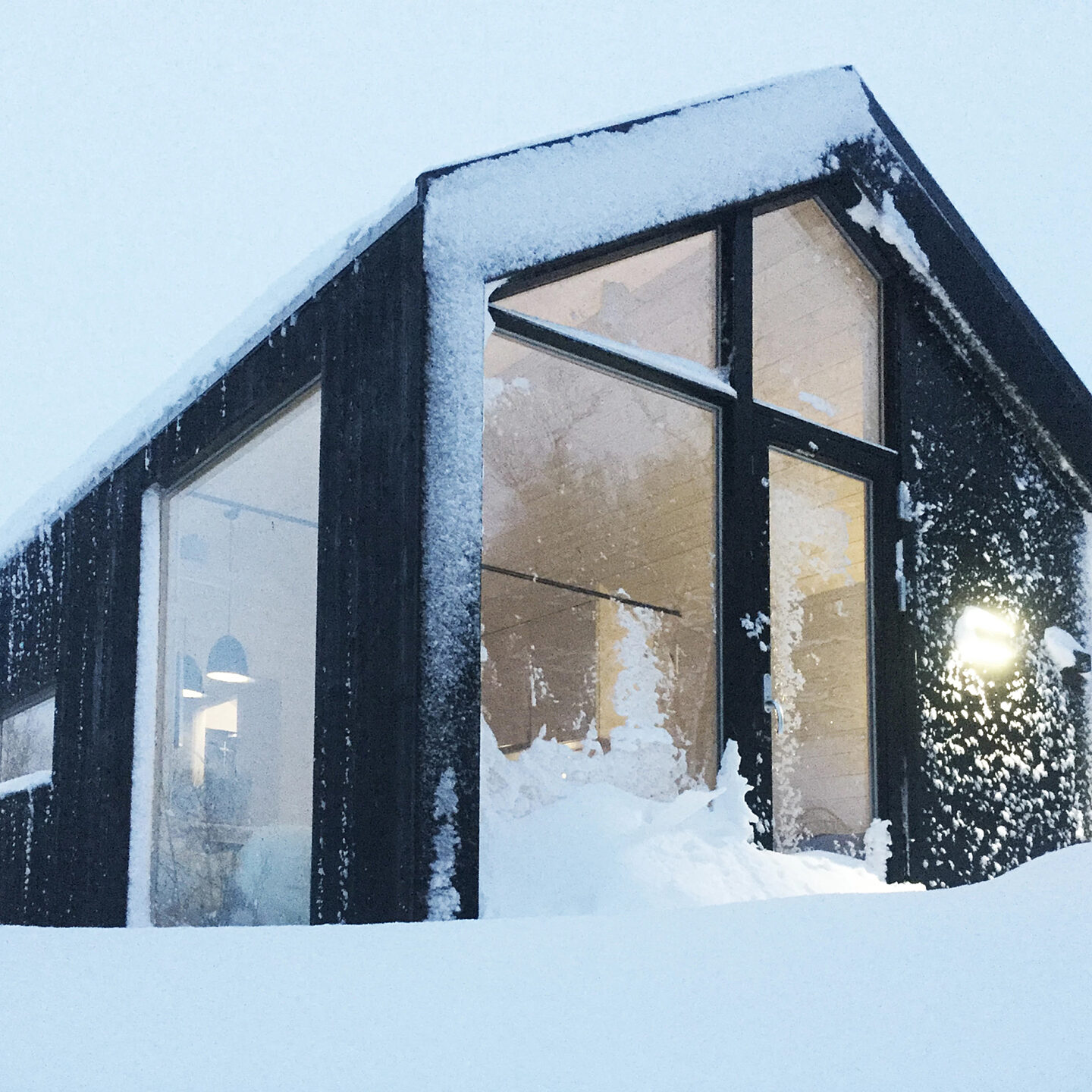
A far cry from the traditional Scandinavian log cabin, the modern “Stranda30” will give you shelter from rain and snow just as well as a larger cabin would. Photo © Strandahytta
While closeness to nature has been a part of the Scandinavian soul for generations, modern cabins are not for everyone. In Norway they are typically priced at around 500,000 € or more, which in many cases is more than a family home. Many modern cabins are built in crowded villages or hamlets at the foot of a ski-lift. While these cabins are often roomy and contain many home comforts, the surroundings can be a pale and manicured imitation of the wild outdoors.
There are also issues with sustainability. Large cabins take a lot of materials to build, and they require more space and put a strain on resources and infrastructure. This increasingly brings construction projects into conflict with environmental interests as well as local communities.
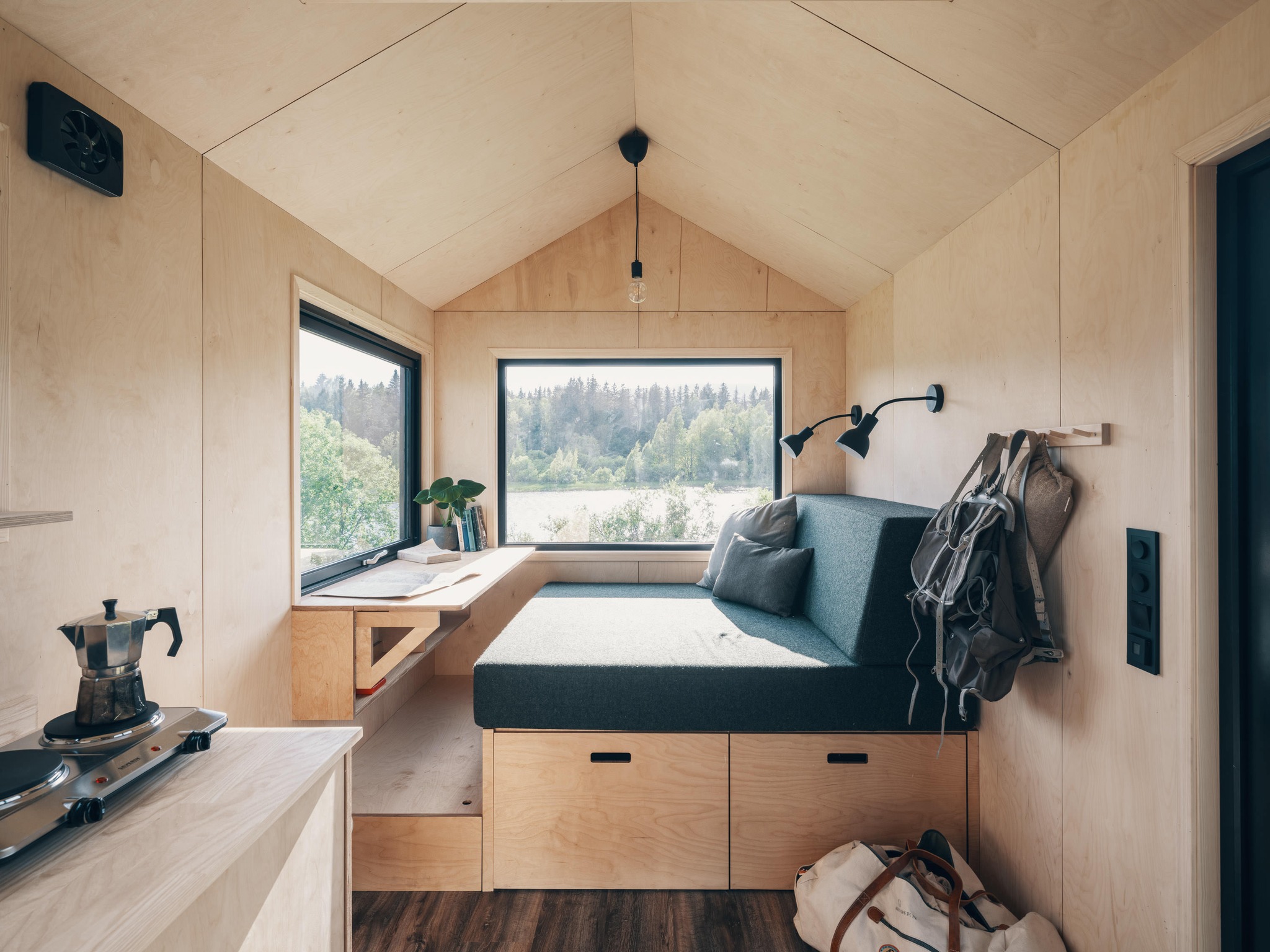
Clever interior architecture means plenty of room for you and your belongings in the plywood interior of the “Rasta” micro cabin. Photo © Aksel Jermstad/Norske Mikrohus
A small trend fuelled by big costs
“Inflation, higher interest loans, and a generally higher cost of living point towards smaller, more affordable cabins. Micro cabins cost a fraction of a new, larger cabin, and this opens the door for a lot of people who would otherwise be priced out of the market. In addition, they have a much smaller environmental footprint,” says David Reiss-Andersen, co-founder of Norske Mikrohus, a company that specializes in building micro houses.
At first micro cabins were either conversions of existing buildings, for example storehouses or small barns connected to remote farms, or designed and built from the ground up often by the architects themselves. Today, prefabrication is king. Taking a leaf from micro home building, the cabin models are designed by architects, the construction takes place in a factory and the finished cabin is transported to the site in a truck and manoeuvred into place with a crane.
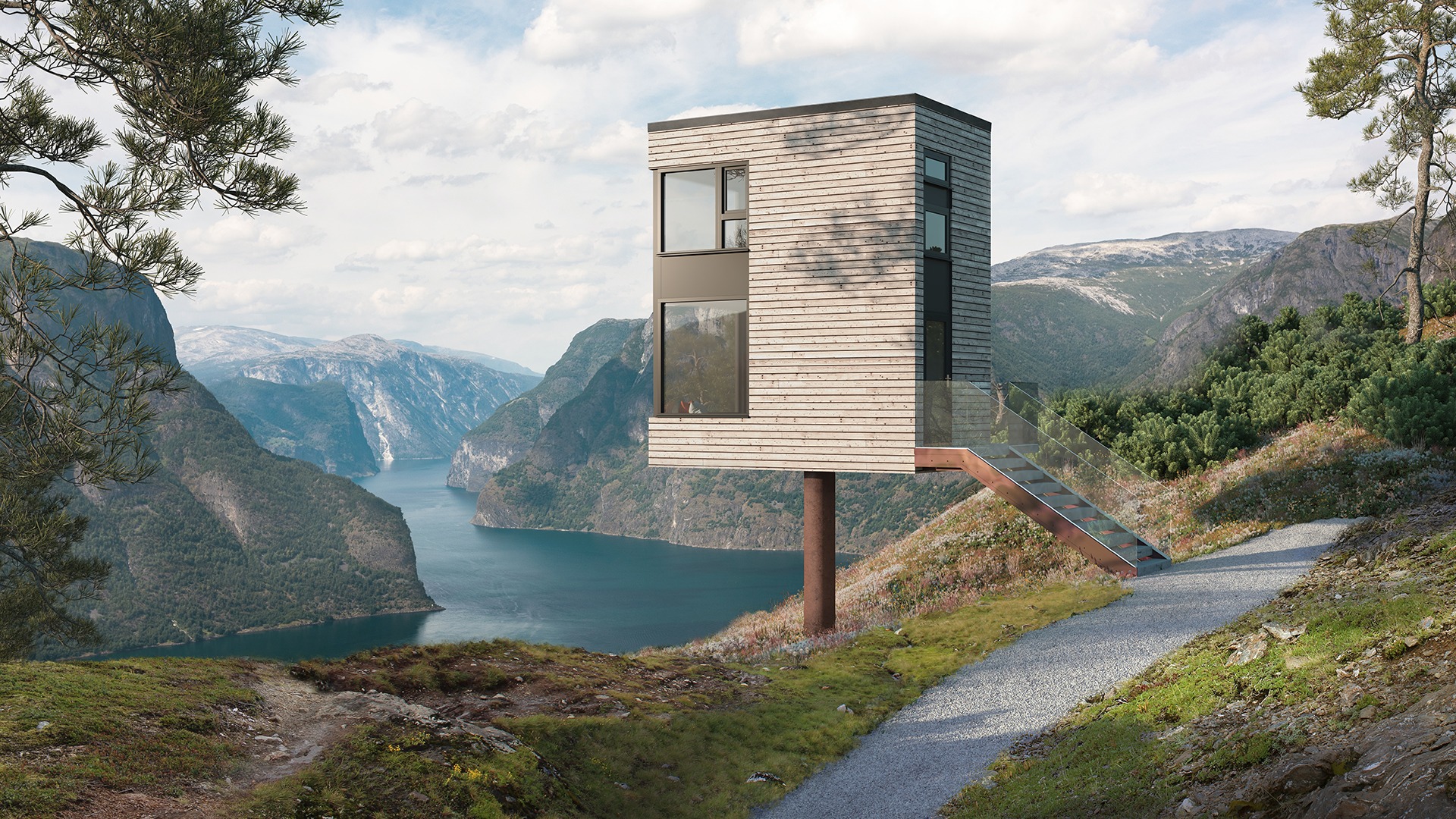
While many modern cabins lie low in the landscape, the iconic “Utsikten” seemingly floats in the air, offering a different take on what a micro cabin can be. Photo © Norgeshus
A visual break from log cabin tradition
Architecturally speaking, the appearance of a micro cabin can vary but is often strikingly different from larger and more conventional cabins and cottages. While many new “macro” cabins lend heavily from the past, the buyers of micro cabins will typically favour a sterner, more minimalistic exterior.
The interior is all about fitting as much as possible into the available space without cluttering the floor space. Expect clever storage spaces, multifunctional furniture, mezzanines and open floor plans.
Building regulations are not always at the forefront of the industry, and this is also true for microstructures. However, things are moving forward.
“The new regulations that came into law this July are very helpful because they define what a micro home is in legal terms. This makes it possible for potential buyers of structures under 30 square meters to get a building loan, and it also helps local authorities to accommodate for micro homes,” Reiss-Andersen argues.
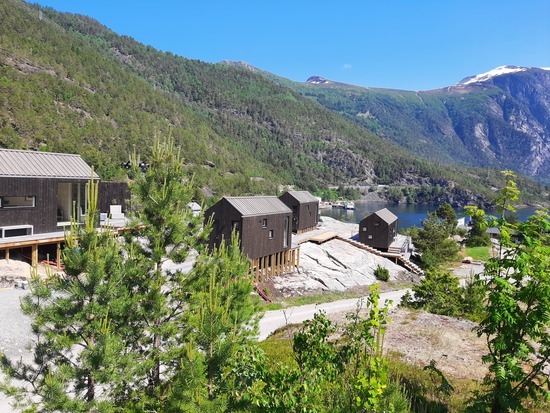
Strandahytta has gone for sleek and minimalistic design against the backdrop of the impressive alpine Sunnmørsalpene mountain range. Photo © Strandahytta
First movers pave the way
While these regulations do not address micro cabins specifically, Reiss-Andersen believes all types of micro houses will benefit from them. He says the business has come a long way from its somewhat unregulated camper van origins.
“The people who have acquired micro cabins are what we call the first movers, and they are helping the sector to move forward. I think we are going to see a swell in activity in the next couple of years, as the process becomes smoother, and more people start realizing that the micro cabin trend is here to stay. This, in turn, will lead to micro cabin villages that are more compact and have a noticeably lower impact on both climate and local environment and wildlife,” he says.
As more and more people are considering buying a very own micro home-away-from-home, there are still obstacles to navigate. One of these, according to Frode Mork, co-founder of Strandahytta, is production capacity.
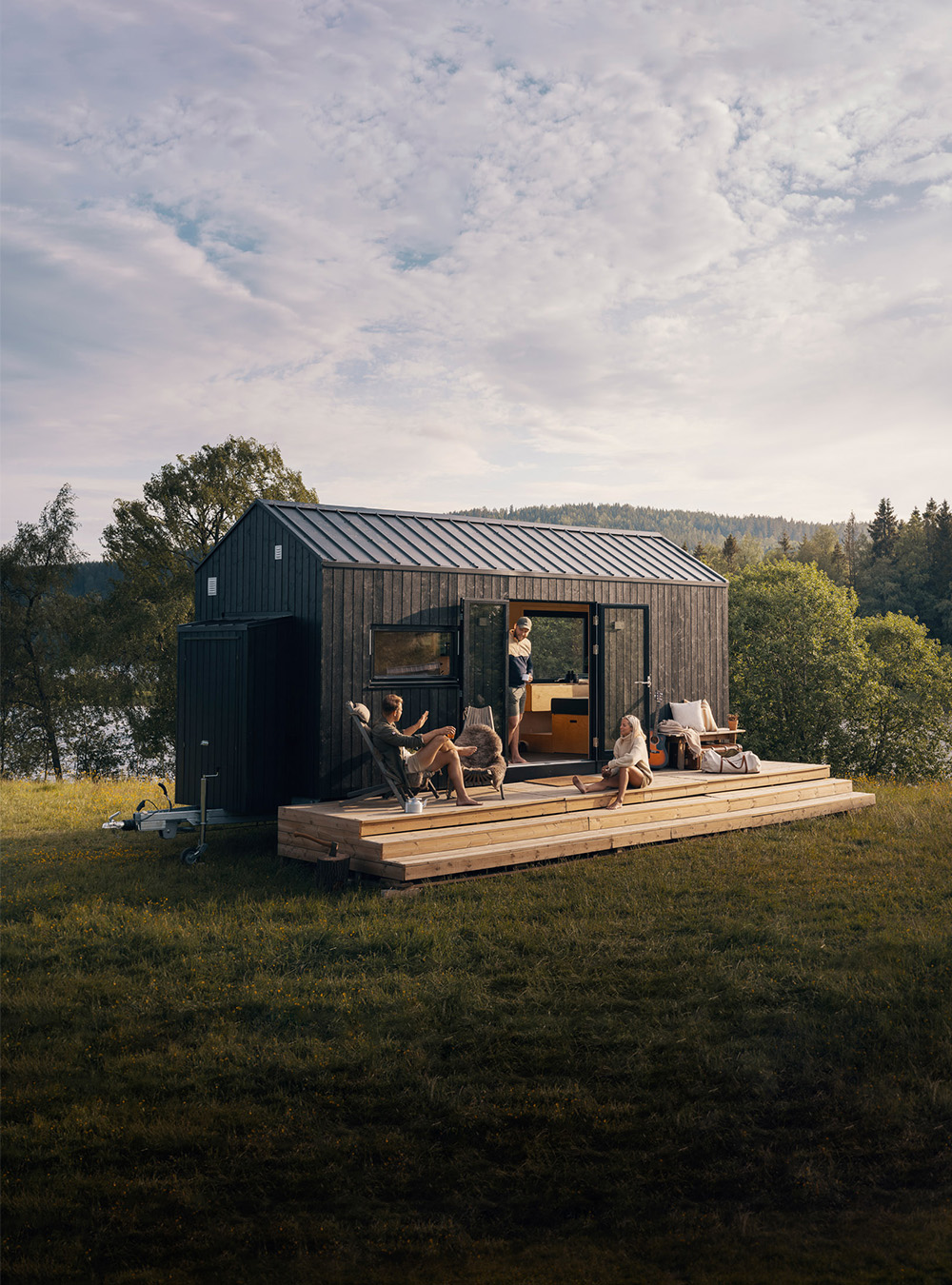
Traditional in shape but modern in every other sense, the “Rasta” micro cabin offers the best of both worlds. Photo © Aksel Jermstad/Norske Mikrohus
“Even with practically no marketing from on our part, we are seeing an increased interest in our micro models, especially from young families looking to buy their very own cabin, as well as from people who want to build to rent. Right now, all our capacity goes to apartment projects, but if this interest holds, we will look to produce more micro cabins again starting next spring,” Mork says.